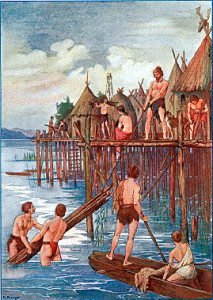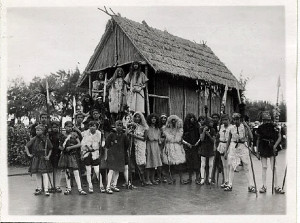By Marc-Antoine Kaeser
Director of the Latenium Museum, and associate professor at the University Neuchâtel (Switzerland)
To see the excellent WARP30 Conference PowerPoint for the following Abstract click here: Getting Out of the Glutinous Ghetto by Marc-Antoine Kaeser (it is large so may have to download)

Since 2011, the Prehistoric Pile dwellings around the Alps have been listed in the UNESCO World Heritage. This reflects the importance of the study of these sites, both in the shaping of the methods of prehistoric science, and for the understanding of habitat, economy, craft and everyday life during the recent prehistory of Europe.
On further examination, one may wonder however about the reasons for the very late integration of this field of research into mainstream archaeology. For a decade now, specialists of the field have identified several motives for this poor recognition, which Francis Pryor qualifies as a “glutinous ghetto” noxious to the dialogue within the discipline. These motives may be summarized in a few keywords: a strong methodological specialization detrimental to the widening of synchronic, cultural perspectives, approaches governed by functionalism, and explanatory schemes favouring environmental determinism.
Our contribution will show that in this matter, the burden of the history of research should also be taken into account. In fact, the development of lake-dwelling archaeology is closely related to its double, national and ideological instrumentalization. On the one hand, the discovery of the lake-dwellings has indeed contributed to the affirmation of the national identity of the new Swiss federal state founded in 1848 in the aftermath of the Sonderbund civil war. On the other hand, and in a more subtle way, what we define as the “lake-dwelling myth” has long served to promote the universal values of liberal progressivism. [see illustration above]
Accordingly, the “Lake-Dwellers” were mobilized in the fight against Pangermanism and Nazism – an embarrassing legacy for modern archaeological science. Until the end of the twentieth century, the archaeological community actually strived to refrain from all social and cultural interpretations, which might be suspected of ideological exploitation.
In this sense, the application to World Heritage which started in 2004 heralds the start of a new era in pile-dwelling research, fostered by a new generation of prehistorians, who take advantage of a renewed, critical and reflexive historiography in order to dispassionately address this potentially sensitive past.

Leave a Reply